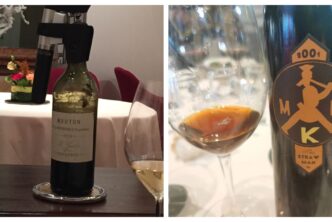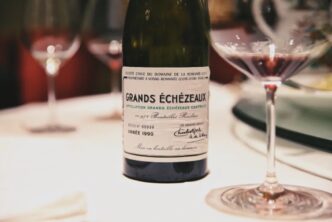Kohler-Ruprecht 2021 Riesling Spätlese Trocken Kallstadter Saumagen 94
by Robert Millman

Just look at how many words it takes to even list the wine I am discussing below! No wonder such wines are as far from household names as one could imagine. Indeed Kohler-Ruprecht may be the most old fashioned winery in Germany. It makes and labels its wines pretty much as it did in the 19th and early 20th century. Run since 2009 by the irrepressible Dominik Sona, the winery is located in the Pfalz in the town of Kallstadt. Its best and oldest vineyard is the superb Saumgen site whose history goes back to the early 1800s. Of its 40 hectares, Kohler Ruprecht owns 4. Its high concentration of limestone contributes to the intensely mineral character of the wines which show itself best in the dry versions of the wine.
The wineries’ decision to label its wines the way that was used before the VDP forbade terms like Spätlese Trocken, led to leaving the VDP in 2014. The virtue of the old way is that it indicates the ripeness level of the grapes which are then fermented to dryness. The VDP’s rules dictate that there can be only one dry wine from one Grand Cru site. For Dominik Sona this is contrary to the very nature of the way Riesling matures in its vineyards. The GG system may have been a commercial success story but it does not follow nature. This was brought home to me vividly at a recent industry tasting in which we were able to compare the Kabinett Trocken with the Spatlese Trocken. Having been picked at lower sugar levels than the Spatlese the Kabinett was lighter, perhaps more delicate and charming than the Spatlese trocken. But it was the latter which really rose to the heights of Riesling nobility. The richness imparted by the riper fruit gives the wine a seriousness and depth that Kabinett could not achieve. The chalky texture supported the diverse fruit, citrus and herbal notes perfectly. Almost a food, the 2021 can be enjoyed by itself and just as well with Chicken, Pork, fresh water fish and hard ripened cheeses. The Kohler-Ruprecht Rieslings are connoisseur wines to be sure. They are under-valued partly because the work that is required to understand them. Drinking Window: 2024-2030.
Le Clos de la Meslerie 2018 Vouvray Tendre 93
by Ian D’Agata

Golden yellow colour. Aromas of apple pie, apple jelly, baked cinnamon pears and fresh citrus fruits: this is not unlike a great Alsatian late-harvested Pinot Gris wine, but with much more acidity. Rich, layered and lusciously mouthcoating, it carries deep flavours of baked pears, cinnamon, honey and crystallized tropical fruits, enlivened by a touch of minerality. The aftertaste is long and honeyed. There’s a strong amount of residual sugar (25 g/L r.s.) here such that this is really not a classically dry white wine, but the sensation of sweetness is nicely buffered by Chenin’s high acidity. Yet this wine is so well-balanced that it tastes soft and mellow, which explains its designation as a “Vouvray Tendre” (in comparison, the estate’s 2022, that carries less than 15 g/L of r.s. is labeled as a Vouvray Sec-Tendre). This 2018 off-dry wine is an absolutely gorgeous 100% Chenin Blanc naturally-made with grapes from organically farmed vines that are as much as ninety years old (the average ranges between 20-60 years of age). The winery is located in Touraine, not far from the city of Tours, and its buildings date back to 1766. The winery is owned by Peter Hahn who spent his previous lifetime in enterprise strategy and finance, but has since devoted himself to making fine wines in the Loire since 2002, when he bought the estate. Drinking window: 2023-2040.

 English
English

